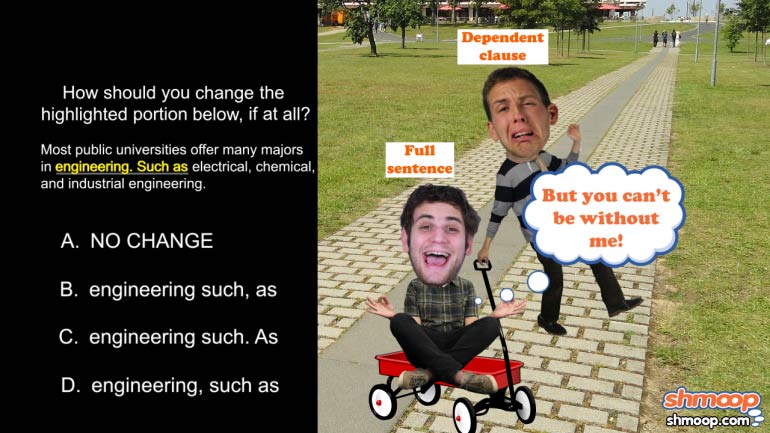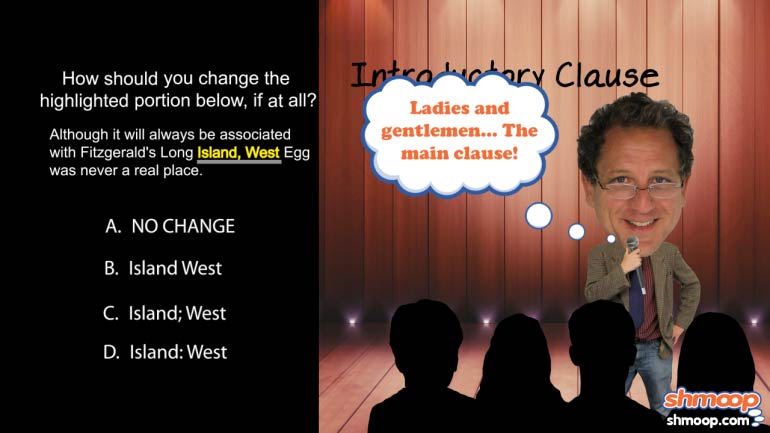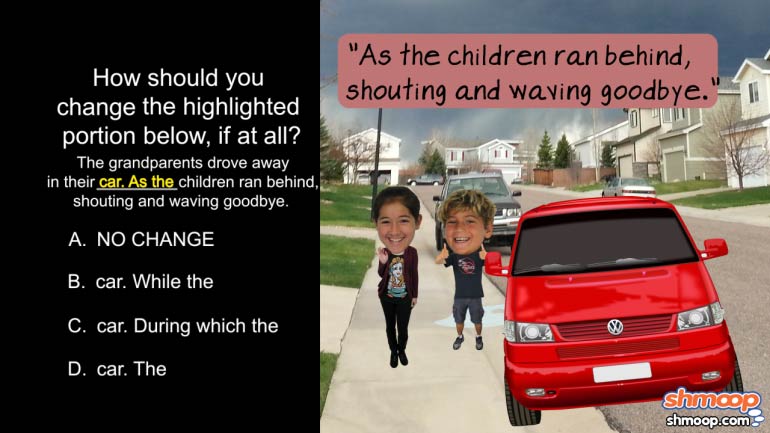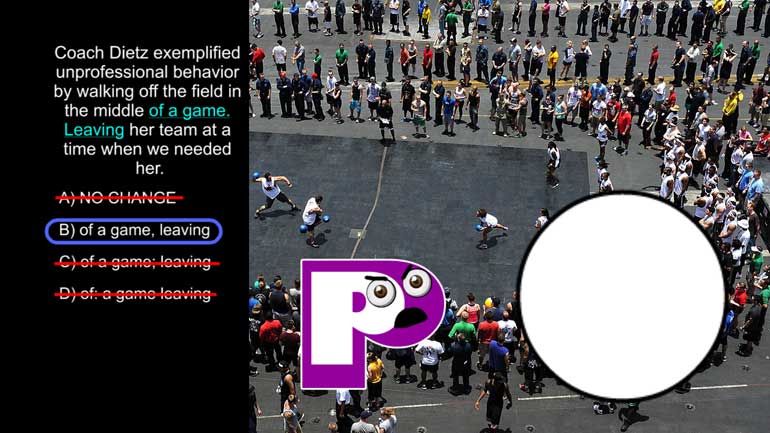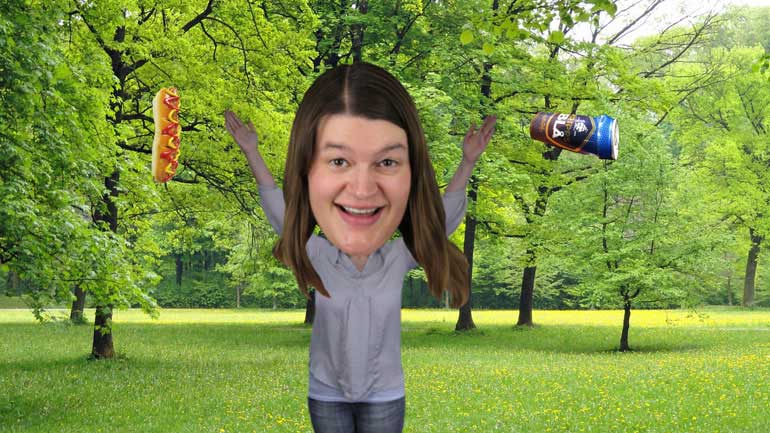ShmoopTube
Where Monty Python meets your 10th grade teacher.
Search Thousands of Shmoop Videos
Sentence Fragments Videos 6 videos
ACT English: Sentence Structure Drill 1, Problem 1. Properly punctuating dependent clauses.
ACT English: Sentence Structure Drill 1, Problem 2. What punctuation do we need between these clauses?
ACT English: Sentence Structure Drill 1, Problem 3. Proper word choice for independent clauses.
ACT English 5.3 Passage Drill 194 Views
Share It!
Description:
ACT English: Passage Drill Drill 5, Problem 3. How would you correct the underlined segment, if at all?
Transcript
- 00:03
Here’s your Shmoop du jour, brought to you by spinnerets.
- 00:06
The female counterparts to spinneros.
- 00:31
How would you correct this underlined segment from the passage, if at all?
- 00:35
that are extruded?
- 00:38
And here are the potential answers...
Full Transcript
- 00:44
To “extrude,” is to force, press, or push something out, often through a hole.
- 00:50
So it’s the perfect word to describe the way in which spiders force sticky stuff out
- 00:54
of their spinnerets.
- 00:56
OK, our stomachs just turned a bit. Let’s move on.
- 01:00
The main beef between these answer choices is whether the word “that” or “which”
- 01:04
is right for the sentence.
- 01:07
It’s no surprise the answers disagree about this; misuse of these words is one the most
- 01:11
common grammatical mistakes out there.
- 01:14
Here’s the deal...
- 01:15
“That” is used to introduce restrictive clauses.
- 01:22
These are clauses that the sentence can’t do without. If removing a clause from a sentence
- 01:26
changes the sentence’s meaning or omits something vital, we know we’re dealing with
- 01:31
a restrictive clause.
- 01:34
The word “which,” on the other hand, is used to introduce nonrestrictive clauses.
- 01:39
These are clauses that can be removed from the sentence without changing the meaning.
- 01:44
They’re additional information, extra spice if you will.
- 01:49
In the sentence in question, the clause is totally restrictive.
- 01:52
If the writer cut it, we’d have no idea how these proteins are extruded through spiders’ spinnerets to make silk.
- 01:59
We hope this isn’t where our silk boxers came from.
- 02:01
If so, they’re going in the trash as soon as we get home.
- 02:06
Since the clause is restrictive, we know the word “which” is not required, and we can
- 02:11
cross out options (B) and (C).
- 02:13
This brings us to answers (A) and (D). Both correctly use “that” to introduce the
- 02:18
restrictive clause, so we’ll have to find another way to narrow down our options.
- 02:22
(D) uses the present progressive tense with “are extruding,” while (A) uses the simple
- 02:28
present with “are extruded.”
- 02:31
Out of the two, (A) is the best answer because the simple present can be used to talk about
- 02:36
things that happen in general.
- 02:38
(D)’s use of the present progressive makes it sound like the extruding is happening right now.
- 02:43
Sure, spiders all over the world are currently weaving their webs, but the author is referring
- 02:46
to the way in which they generally accomplish they’re web weaving.
- 02:50
Anyway, we try not to think about the fact that spiders everywhere are weaving as we speak.
- 02:54
What if they're working together to form one giant web to trap humankind?
- 02:59
Laugh now, but only time will tell.
Related Videos
ACT English: Punctuation Drill 2, Problem 2. Where should the semi-colon be placed?
ACT English: Punctuation Drill 3, Problem 1. How should this sentence be changed so that it is grammatically correct?
ACT English: Punctuation Drill 3, Problem 2. How should we properly hyphenate the words in this sentence?
ACT English: Punctuation Drill 3, Problem 4. Which choice best formats this list of items?
ACT English: Punctuation Drill 2, Problem 1. Which choice of punctuation best completes the sentence?
